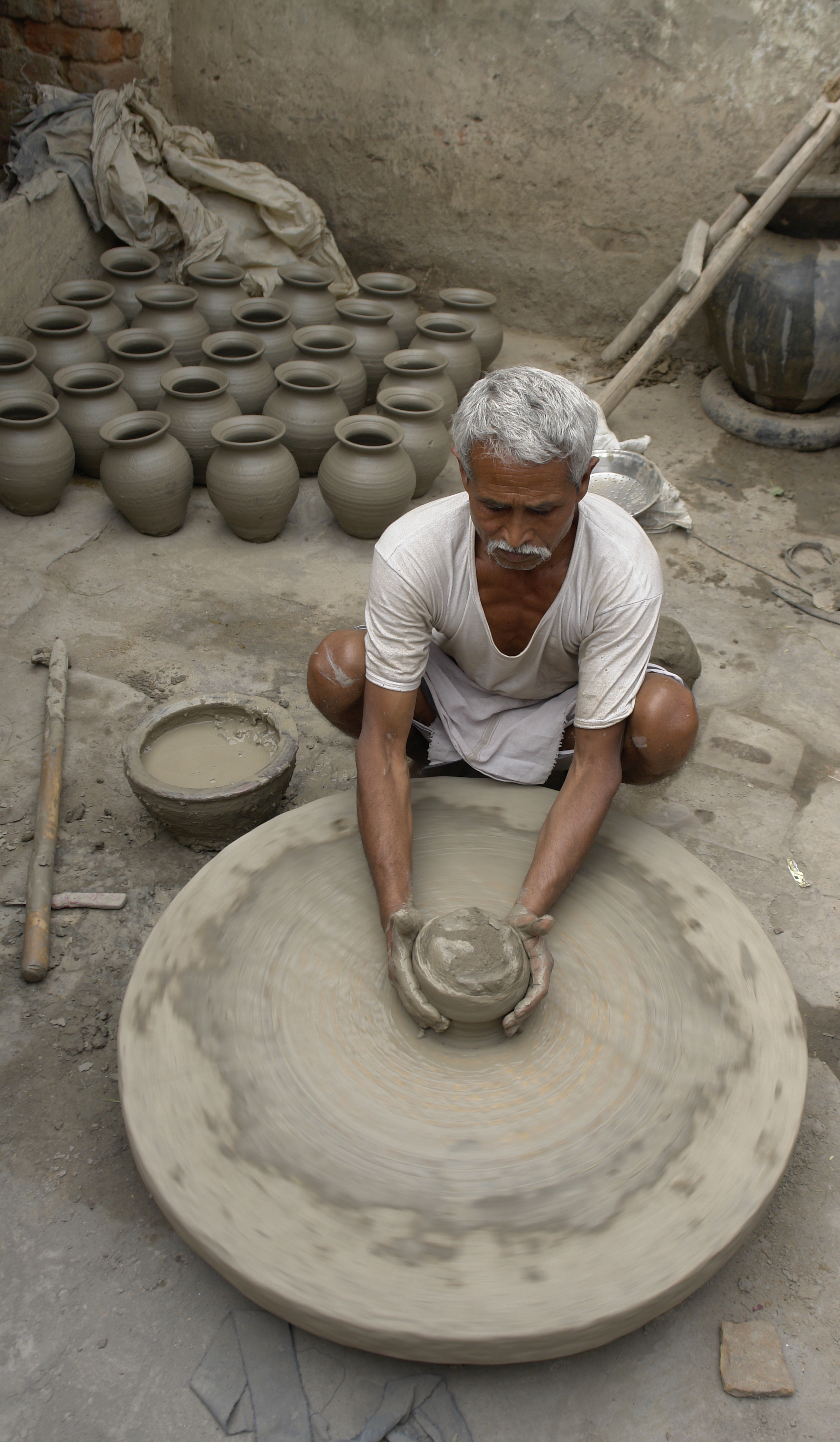Debuting with An Atlas of Impossible Longings (2008), Roy has steadily published 5 novels over about 14 years; The Earth Spinner in 2022 is her most recent. Each of her novels have been of good quality, well written, non-stereotypical, full of strong characters; her latest has been no exception.

There are a few parallel storylines in this novel, and two protagonists – Sarayu and Elango. We first encounter Sarayu on scholarship in a British university, but much of her story is actually set in her childhood in India, in a neighbourhood called Kummarapet, named for ancestral potters (the kummara). Sarayu is good friends with the man who drives her and little sister Tia to school every day on his rickshaw. Elango is not just a rickshaw driver however, he is a potter, from a long line of potters stretching back generations.
When we meet Sarayu, she is in England and feeling the dislocation of migration. This has of course been written about umpteen times in so many a diasporic novel, and yet Roy still finds an original way to convey the sentiment:
There’s nobody I can talk to about any of this at the university, not even my new friend Karin. Where would I begin? I am a sea creature transplanted onto land. I would have to start with explaining what water is.
p14
The contrasts of Sarayu’s life in India and in England are well drawn out, seen through her childhood/teenaged eyes, then through her young adult perspective. The experience of the Global North from a citizen of the Global South is captured in Sarayu’s feeling of non-belonging, well expressed by Roy, and very likely experienced by legions of international students to the UK:
In some ways, everything’s easy here, it’s a do-what-you-want place, people are mostly kind, but there’s something else – they invite you over but seem to disinvite you in the same breath, they smile at you at lectures one day and look through you the next, their voices and bodies are modulated to make you feel excluded. It isn’t paradise lost, it’s a paradise that is also purgatory.
p159
The other storyline and the one which is given more air time in the novel, is of Elango’s tale, of his love of making pots and his talents, and then of his falling in love with Zohra, a Muslim girl, granddaughter of a bind calligrapher. (Elango himself is a Hindu.) However, there is none of the sensationalised, hyped up religious hate that so blights many another novel about Muslim-Hindu romances. Yes, anti-inter-religious relationships do flare up in The Earth Spinner, and yes, even to the extent that but Elango and Zohra’s lives are uprooted in a single incident, but the deliberately triggered community incident is shown to be a situation caused and exploited by those wishing to cause trouble, and does not exist as a consistently present community tension as such. Although there is difference and segregation between those of different religions in Kummarapet, for most part, people of different faiths easily and peaceably interact and co-exist as neighbours and friends. That said, there is clearly enough mistrust for trouble to be incited if a catalyst is provided.

However, it is significant that there are inter-class interactions and intimacies happening too – Sarayu, daughter of a good family, is permitted to take pottery lessons from Elango, who does not treat her as a little madam, but mostly, as a student when she is making pots. He is occasionally stern, often demanding, never deferential, but always caring. Sarayu’s parents also seem exceptionally liberal and open-minded, seldom observing class differences and not setting themselves apart.
There is a 3rd sub-story line in the novel, that of a dog. At the start of the novel, we read of a couple who, when they stop their car journey to take the dog for a walk, are badly assasulted. This couple, both architects, do recover eventually, but they lose their puppy in that assault. The puppy, called Tashi, is found by Elango in the forest later on, and rescued by him. Elango names the puppy, Chinna. Chinna becomes the dog about town, visiting many houses on a daily basis, loved by many of the residents of the town, and a great favourite with Sarayu and her entire family. Chinna seems to be a dog with tremendous charisma and personality, and clearly brings joy everywhere he goes. His original owner however, cannot stop looking for him, and wanders the streets for years, seeking her Tashi, even long after the assault. It is unclear why there is this 3rd sub-plot in the novel; Chinna’s presence, charming as it is, does not play any direct role in the plot of either Sarayu’s or Elango’s stories; the dog is a delightful addition but not a necessary one perhaps. It is not even needed to bind the characters together, and it plays no pivotal role in any of the events which unfold. That said, Chinna is so endearing that it is only a pleasure to have him included in the novel, superfluous as he may be.
Sarayu’s childhood is marked by the incident which befalls Elango, and she remains troubled, even when she goes to England for higher education. In the course of the novel, she has a chance to find some closure by learning more of Elango’s narrative and life story, and closing the loop, so to speak. The novel is not really all about plotline, it is more about the experiences of the characters which shape them, and the pleasure of reading about pottery and pot making, the textures and skills and craft. Roy’s writing continues to be of excellent quality, always original, never disappointing, never dull. Extremely readable, completely un-stereotyped and un-exoticised, a breath of fresh air every time in an arena of Indian writing in English which can too often be cloying, rehashed, and pedestrian.
~ The Earthspinner, by Anuradha Roy ~ HarperVia, 2022
















Recent Comments